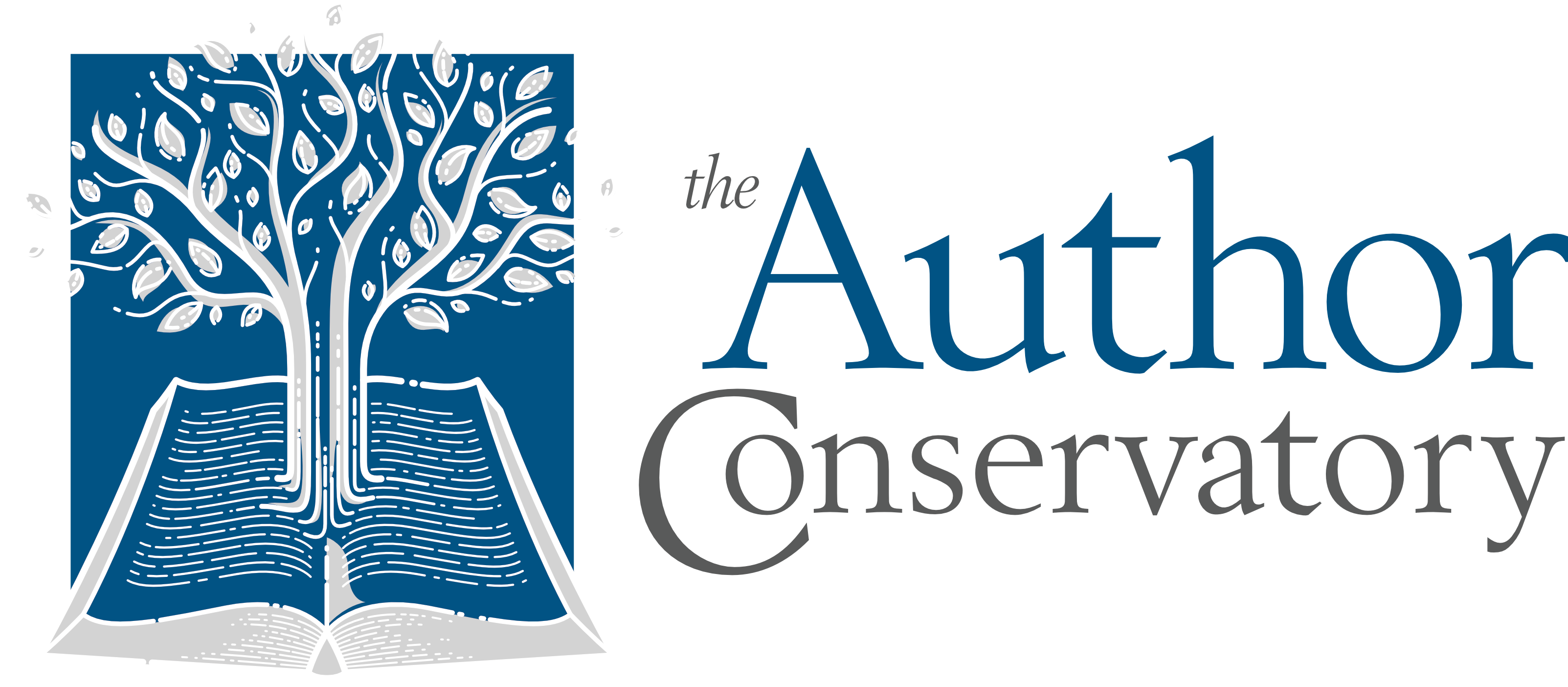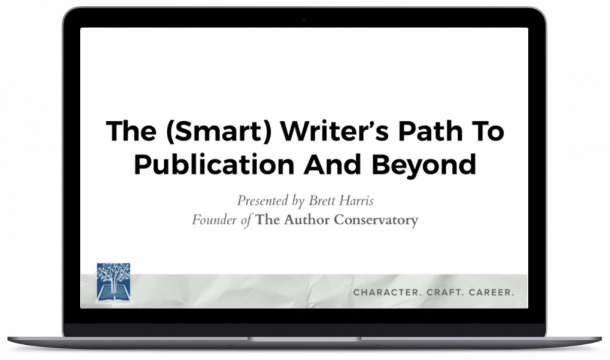Have you ever found yourself madly flipping pages of a new novel, desperate for what happens next and with complete disregard to what time it is? Or literally on the edge of your seat while watching a new film in the movie theatre?
These books and films are so good at keeping you engaged because they’ve nailed the fundamentals of a fantastic story outline.
Within a story, an outline is an arrangement of the series of events found within the pages.
Masterful story structure involves universal moments (known as “plot points”) that are found in almost every story. Your favorite books and films probably all contain a “call to adventure” moment, a twist halfway through, and an “epic battle” at the end.
Not only does an outline help you arrange your story in logical order, but it also ensures that you hit each plot point and important moment that your readers are expecting—whether they realize it or not.
At The Author Conservatory’s fiction writing program, we teach our students in-depth outlining techniques so that they are able to fully flesh out and craft a masterful story that resonates with readers.
Here’s the exact process we walk our students through, which you can use for your own projects:
Why our students outline their projects
Some writers love to dive into drafting without crafting an outline first. These writers are famously dubbed as “pantsers” because they “fly by the seat of their pants” as they write, rather than taking the time to outline their novels.
Pantsing is a valid approach to writing a story. After all, who doesn’t want to dive straight into a project they’re excited about? Within our programs, though, we require all our students to try writing an outline first, even if they’d normally pants a novel when they’re not working with us.
Why? Because when a student is still trying to learn the fundamentals of story, it’s much easier to fix major story problems when they’re in outline form. Fixing them after you’ve written a first draft can require rewriting huge sections of a manuscript. Starting with a solid outline usually enables students to spend less time on revisions later.
How our students outline their novels
Step 1: Lay the groundwork
Before our students ever get to outlining, we walk them through a crucial first step: developing a high-concept premise.
Many writers want to dive straight into the outlining phase and end up overlooking core story elements, only to realize there’s something missing when an editor or agent points it out. And who wants to discover a major flaw in their book’s plot after hours of dedication and hard work when they could have resolved it earlier?
We avoid this scenario by ensuring our students start with a high-concept premise that outlines five major pieces of their novels:
- Sympathetic main character:
A protagonist who is not only interesting and engaging but also sympathetic. The key to making a sympathetic protagonist is by having them care about someone or something other than themselves. Rule of thumb: no amount of perfect plot or intriguing worldbuilding will make up for a protagonist no one likes.
- Believable goal:
The goal involves something that your protagonist is trying to achieve over the course of the story. In order for your reader to stay invested, the goal should be something that your protagonist can believably achieve.
- High stakes:
In order to keep readers wondering what happens next, we have to establish stakes: something that your protagonist stands to lose if they fail their goal. Bonus points if it ties into whoever they care about (the piece that makes them sympathetic in the first place).
- Compelling twist:
Midway through the novel, your protagonist will experience a new development or piece of information that changes the course of the narrative.
- Comparable titles:
As a bonus step, our students include 2-3 films or other books that are comparable to their own project. This prepares them for creating materials to send to agents once they start preparing for the publishing industry.
These pieces serve as a rock-solid foundation for the stories that our students write. Instead of letting them dive right into writing, we use these extra steps as our primary way for teaching excellent writing craft.
Step 2: Outline act one
The first act of your novel takes up about 25% of your total novel and serves as the setup for your entire story. This is the moment to grab your reader’s attention and keep them engaged throughout your whole book.
Act one contains these four plot points:
- Normal world:
Introduce your protagonist and their normal world. This is a great chance to show us what they believe about themselves, what they fear, and what they want.
- Inciting incident:
The protagonist’s normal world is rocked by a “call to adventure” that they can’t ignore.
- Second thoughts:
Something causes the protagonist to second-guess the call to adventure, tempting them to stay in the comfortable normal world.
- Climax of act one:
The protagonist commits to leaving their normal world and embarking on the call to adventure presented in the inciting incident.
As a whole, act one serves to establish your protagonist’s goals, obstacles, and stakes before they embark into the adventure of the novel. A well-written act one is a springboard for your protagonist (and readers) to enter the rest of the narrative.
Step 3: Outline act two
Next is act two, which comprises about 50% of your total novel. In this act, your protagonist is almost always in a state of confrontation. They are consistently presented with external obstacles that challenge their internal beliefs and force them to make decisions that ultimately lead to growth and change.
Act two contains these five plot points:
- Obstacles:
Your protagonist encounters obstacles on the adventure. They second guess their decision to leave their normal world; the journey isn’t what they thought it would be. The best obstacles are both physical and internal, addressing the protagonist’s deepest fears as well as putting them in physical danger.
- Midpoint:
A twist, “aha” moment, or big reveal that shifts the direction of the narrative. From here on, the protagonist begins to proactively make change rather than react to the obstacles they’ve encountered.
- Obstacles:
The protagonist faces further obstacles along the new direction they’ve taken.
- Darkest moment:
The lowest moment in your novel where it seems like all hope is lost. Your protagonist is faced with the choice to continue one or give up.
- Climax of act two:
Spurred on by motivation, encouragement, or newfound information, the protagonist continues into the “final battle” or climactic moment. This is where every point of tension in your novel comes to a head.
As a whole, act two serves as the majority of the plot development. The character is forced to overcome obstacles, face their fears, and continue to battle forward. Act two is the majority of the novel; oftentimes we see students work the hardest on the act to ensure that it is well-paced and engaging for readers.
Step 4: Outline act three
Act three comprises the remainder of the manuscript and involves the resolution of the conflict in the rest of the novel.
Act three contains these three plot points:
- Climax of act three:
An internal climactic moment after the high-intensity climax of act two. The protagonist confronts their lie: a misbelief they have about themselves, others, or their world. He or she realizes the full capacity of what they’ve learned during the course of the narrative. This is a great moment to leave readers with a “theme” to take away from the narrative.
- Last obstacle:
Show readers what the protagonist has sacrificed throughout the course of the narrative.
- Denounement:
Wrap up any loose ends and show us where the protagonist goes from here.
Act three serves as a key moment for the character’s internal journey, as well as wrapping up the external plot. With a well-written act three, the journey you’ve taken your protagonist on will impact your reader long after they close the pages.
Step 5: Get feedback from others
Once you’ve finished your outline, you’re likely tempted to dive straight into drafting. But there’s one additional step that we find crucial to crafting your novel: getting feedback.
When you’re in the thick of developing and writing your novel, sometimes it’s hard to recognize when something isn’t working. Or maybe you’re fully aware that you’re stuck but need outside help to fix plot holes and brainstorm better solutions.
No writer exists in a vacuum, even if you’d rather stay tucked inside your room writing and never step foot outside (you know who you are). Inviting others to read, identify flaws, and provide feedback on your novel will make your story stronger and exercise your tolerance for receiving feedback.
In The Author Conservatory’s fiction writing program, feedback is the backbone of our program and has become one of our distinctions as a program. We take our students through multiple rounds of feedback on their outlines before they move onto drafting.
Author Conservatory students receive feedback from our instructors as well as peers. We’ve found that both professional and peer feedback have been transformational in the stories that our students have produced.
Even if you’re not currently enrolled in The Author Conservatory’s fiction writing program, don’t skip this step. Find a mentor or fellow writer to give you feedback and point out ways your novel can improve. Better yet, swap projects with them and offer to help them with what they’re working on.
How we teach outlining in our fiction writing program
The process of laying a solid story foundation, outlining all three acts of a novel, and getting feedback throughout that process is exactly what we teach our students here at The Author Conservatory.
Our students learn how to craft their novel outlines through recorded trainings taught by Katie Phillips, director of our fiction department. Each training provides specific homework to complete, such as outlining act one or developing a character arc.
Then, students sign up for a live critique call from one of our faculty members. The instructor reads their document and provides in-depth and personalized feedback. Students can also ask other students and community assistants for brainstorming help, accountability, and encouragement.
After multiple rounds of feedback, students are approved by a board of faculty members to move onto the next step. At long last, our students get to jump into writing a project they can be confident in and proud of—thanks to our in-depth approach to teaching outlining and story structure.
Join The Author Conservatory’s fiction writing program
If you want to learn how to craft professional novels from the ground up, we invite you to apply for our fiction writing program. You’ll talk to one of our admissions advisors, who will determine if the Conservatory is the next best fit for you.
Our fiction writing program teaches students mastery of the fundamentals of fiction writing, as well as the marketing and business skills it takes to be successful in the industry.

